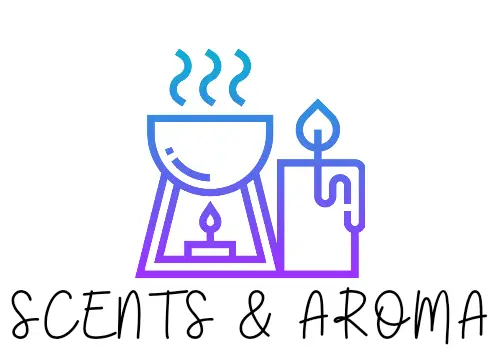As we snuggle indoors in cooler climes, the aroma-filled flicker of our favorite scented candles can be both meditative and escapist. Even if you are still in the city, the most beautifully designed candle can transport you to a tropical garden on the Mediterranean or the humid passages of a Delhii bazaar.
However, there’s more to burning a candle than lighting a match, whether you crave the cozy scent of a fireplace or the calming notes of fresh violets. Are they safe for your best furry friend?

Are soy candles safe for dogs? Although some scented products should be avoided for the health and safety of you and your dog, especially those with essential oils, candles made from pure soy wax and 100 percent organic cotton wicks for a smooth, long-lasting burn can be trusted and are safe for your pet dog to be around.
Is burning soy candles toxic for dogs?
If you follow safe candle-burning practices, soy wax produces little or no airborne particulates. As a result, these beautiful candles can help eliminate unwanted odors from your dog’s coat and leave your home smelling fresh.
Try burning a strongly scented candle in a well-ventilated room to keep your dog’s eyes and nose from becoming irritated if you’re concerned, it might irritate his sensitive nose.
Dogs’ sense of smell is believed to be 10,000 times more acute than ours. Due to this, they may immediately notice the presence of a new scented candle and smell it.
There’s always the possibility that some pets may mistake a candles’ scents for a tasty snack due to their strong noses finding the scents so delicious. Therefore, it’s a good idea to keep your unlit candle out of your dog’s reach so they can avoid digestive distress and you can continue to enjoy the pleasant scents in your home.
If you are concerned about the effects of burning a standard scented soy candle around your pet you could always try a pet safe scented soy candle such as this one just to be extra sure.
Can paraffin wax candles harm my dog?
Paraffin wax is the problem with most candles. Paraffin is a by-product of refining crude oil-and like most things made from petroleum, and it emits many chemicals when burned. Are you familiar with the black soot on your carpet or behind your pictures on your walls? That’s candle residue.
Moreover, the dyes and scents added to paraffin wax candles are made from chemicals from laboratories, which only adds to the toxic load. (The Environmental Protection Agency found that scented candles are a significant source of soot.) Have a read of this guide to see which candle wax produces the least soot.
So, you’re right if you think this is bad for your health! But unfortunately, pets are also at risk.
Due to their small size, the chemicals from paraffin wax candles can quickly accumulate in their bodies (not to mention overpower their keen sense of smell). We may think of candles as a great way to freshen up the house, but to our pets, being around burning candles isn’t much better than sitting near the tailpipe of a car.
For example Yankee Candles are pretty awful and toxic to your pets.
Times when soy candles are dangerous for dogs
Candles are only harmful to dogs if they contain specific ingredients or are consumed in large chunks.
Essential oils are highly concentrated liquid compounds derived from plants. These oils are often used to scent candles. However, essential oils are highly toxic to dogs. The most harmful essential oils are wintergreen, tea tree, peppermint, pine, sweet birch, cinnamon, and citrus. Essential oils are known to cause liver and nervous system damage in dogs and irritation in the mouth and throat.
If your dog isn’t prone to eating random decorations, you can burn candles made with essential oils. Candles that are scented are not necessarily bad for dogs to inhale, but just as some people are sensitive to smells, certain animals may be more susceptible. Therefore, essential oils should never be applied to or fed to animals.
A dog with asthma or impaired breathing should not be exposed to tons of candles. Strong fragrances may also cause an allergic reaction. Sneezing, coughing, itching relentlessly, wheezing, or excessively watery eyes could indicate an allergic reaction to a candle.
As discussed, Paraffin wax should be avoided. Many mass-produced candles are made with paraffin wax, which emits carcinogens when it burns (no, thanks). Instead, stick to organic soy, coconut, or beeswax candles for you and your pup. However, that doesn’t mean dogs should gobble up organic wax candles. It can still get caught in their digestive tract, causing an upset stomach or diarrhea.
Last but not least, don’t forget the wick. Often, candle wicks are attached with small pieces of metal that can cut into your pup’s insides if he scarfs them down. In addition, Wicks themselves could cause choking hazards or digestive discomfort.
Almost all candles contain unique ingredients, so be sure to check with the manufacturer (or read the label carefully) to learn what you are getting. Since small dogs have smaller bodies, they are also more susceptible to illness or infection; they may have a worse reaction than larger dogs.
Call the ASPCA Animal Poison Control Center at (888) 426-4435 to find out what to do if your dog eats a candle.
Soy wax candle fire hazard around dogs
Keeping an open flame away from happy dog tails is a good idea to avoid knocking them over and starting a fire. You can use a shelf, a high table, or a mantelpiece if you have dogs. Do not place the candle on or near a runner or dangling decoration that a playful dog could pull down.
By placing the candle and its holder in a bowl of water, you can reduce the risk of it being knocked over. The bowl must be wide enough to accommodate the candle and its flame if it falls over. A thick pillar candle with a broad base is also a good idea – it’s less likely to fall over than a tall, thin candle.
Conclusion
If you are a candle enthusiast or someone who diffuses scented oils, you can fill your home with beautiful aromas that will not be harmful to your dog’s health.
Choose soy wax, coconut wax, or beeswax candles. In addition to being healthier for everyone’s respiratory systems, they also degrade more easily if accidentally ingested. Cotton wicks, unbleached, are also ideal. If your dog suffers from asthma or respiratory problems, unscented candles present less risk.
- Can You Put Perfume In A Humidifier? (Read First) - September 17, 2022
- Can You Put Essential Oil In A Steam Mop? (Safety Advice) - September 17, 2022
- How To Make Lavender Oil At Home ( Candles And Diffusers) - September 9, 2022
